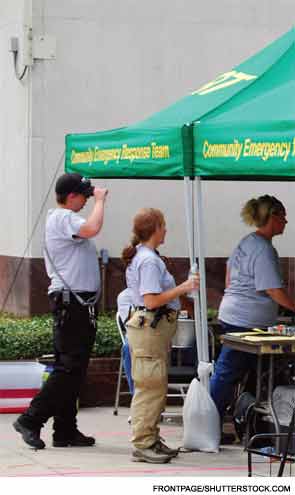
Explore This Issue
September 2013Telemedicine systems (TM) are thought of as a way to get physicians to underserved areas. Usually this means a doctor in an urban setting working remotely with patients in a rural area. After Hurricane Katrina struck in 2005, physicians in Louisiana showed that TM can also be a valuable resource in areas affected by disasters.
“Following Katrina, otolaryngology resources were limited in many areas of Louisiana,” said Dr. Arriaga. “There was one week a month where I was on site, but the other three [weeks], I saw my patients from an office in Pittsburgh.”
Basically, Dr. Arriaga and colleagues put together a functioning TM system on the fly following the disaster. With the physicians sitting in their offices in other cities, they had to learn how to run visits as they went along.
“The nurse practitioner in Baton Rouge would put the video otoscope in the patient’s ear and send back information,” Dr. Arriaga said. “We had infrared video goggles to look for nystagmus. Using the camera, I could look for problems with gait and talk to people in the room as needed.”
During the three years following the hurricane, Dr. Arriaga estimates that the first time he shook hands with 40 percent of his patients was in the surgical suite. They had met and talked via the telecommunications link, and the patients had enough confidence in him to go ahead with the procedure. But there were still concerns about the impersonal aspects of the remote interactions.
However, he said, “We did patient surveys and found that satisfaction levels with TM may have been a little higher than in-person visits. We also found that outcomes were comparable to on-site interactions. This gave us confidence that this was not only a theoretically interesting delivery methodology but also a very viable clinical treatment strategy.”
Leave a Reply